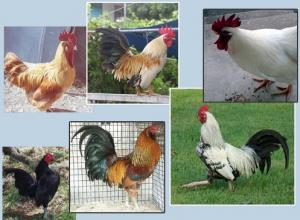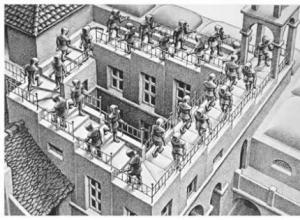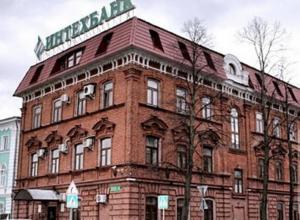Presentation "What is soil. Soil composition." Presentation on the topic "structure and structure of soil" Download presentation soil
1 slide

2 slide

3 slide

4 slide
Dokuchaev Vasily Vasilyevich Russian scientist Vasily Vasilyevich Dokuchaev created the science of soil, the laws of its formation, conservation of fertility - soil science. Soil science is the science that studies soils

5 slide
Soil is a loose, surface layer of the earth's crust that is fertile. Soil is a special natural body. It is formed on the surface of the Earth as a result of the interaction of living (organic) and nonliving (inorganic) nature.

6 slide
Humus is humus formed as a result of the processing of dead plants by microorganisms. Humus contains the basic nutrients of plants, which, under the influence of microorganisms, become available to plants. The main role is played by complex organic compounds - humic acids and fulvic acids. Humus is an important factor in soil fertility. Different types of soils are characterized by different humus content: in podzols - 3 - 4%, in chernozems - up to 12%

7 slide
Climate plants Relief microorganisms time Release of acid Weathering Improve soil composition Loosen and mix Rocks animals

8 slide
1) soil-forming rocks. The physical properties of the soil and the initial content of nutrients in it depend on the properties of the parent rock, its composition and structure; 2) climate influences the course of weathering of rocks, heat and moisture determine the intensity of soil-forming processes, as well as the nature of vegetation and fauna; 3) vegetation loosens and structures the soil, extracts mineral elements from it, and produces root and ground litter to convert it into humus;

Slide 9
4) animals (including microorganisms) in the process of life accelerate decomposition and contribute to the formation of humus; 5) relief distributes moisture and heat: 6) time. In 100 years, a soil layer of no more than 2 cm is formed. The geological age of the territories significantly affects the structure, properties and composition of soils: 7) Anthropogenic factor. Man, by cultivating the soil, applying fertilizers, land reclamation, and cutting down forests, purposefully changes the process of soil formation and the properties of soils.

10 slide
Each type of soil is formed under strictly defined climatic conditions with a certain ratio of heat and moisture. At the same time, each type corresponds to a certain type of vegetation. Dead stems and leaves are directly involved in the formation of humus

11 slide
It is due to the presence of organic matter in the soil - humus or humus. Due to their fertility, soils are the greatest natural wealth, which must be used wisely. The most important property of soil is fertility. Fertility is the soil's ability to produce crops.

12 slide
plants that are most resistant to acidic soil reactions and tolerate moderate acidity (pH 5.0 - 5.5) are potatoes, radishes, radishes, sorrel; plants for which a slightly acidic soil reaction is most favorable (pH 5.5-6.0) are carrots, cucumbers, zucchini, squash, pumpkin, melon, tomato, cauliflower, kohlrabi, rutabaga, turnips, eggplant, horseradish; plants that are sensitive to acidity and develop best when the soil reaction is close to neutral or neutral (pH 6.6-7.0) - white cabbage, beets, lettuce, onions, garlic, celery, parsnips, peppers, asparagus.

Slide 13
Soil structure is the ability of the soil mass to break up into separate lumps of various shapes and sizes. In virgin lands, each soil type is characterized by a certain structure.
Subject : What is soil.
Lesson Objectives :
- Study the composition of the soil
- Identify the basic properties of soil
- Find out about the prevailing soils of your native land
Prepared the presentation
Eliseeva Irina Vitalievna
Primary school teacher
MAOU secondary school No. 2, Malaya Vishera

What is soil?
What properties does it have?
The shovel said: - earth to dig.
The boots said: - earth to walk on.
And the people said: - land to live.

- Novgorodskaya region- non-chernozem, it is characterized by podzolic soils.





Practical work
Experience 2
Take some blotting paper and sprinkle some soil on it. Press it firmly onto the paper. Shake the soil into a glass of water. What will you see? What does this experience prove?
Experience 1
Take a glass of water and throw a lump of soil into it. What will you see? What conclusion can be drawn?
- There is in the soil AIR .
There is in the soil WATER .


Cycle of substances in nature
Animals
Plants
Dead remains of plants and animals
Humus
Salts
Microbes


Proverbs:
The earth is a plate: what you put in is what you take out.
Good earth will raise more.
To plow deeper means to chew more bread.

Test
1.Choose the correct soil definition
I) the top layer of the earth, where there is sand and clay;
E) the top layer of the earth, where there is sand, clay, air, water;
O) the top fertile layer of the earth;

2. What is the main part of the soil?
T) humus;
D) sand;
B) clay.
3. What is formed from humus under the influence of microbes?
M) water;
H) air;
L) salt.

4. What do plants use for nutrition?
E) microbes;
I) salt;
Yu) humus.
5. What is formed from the remains of dead plants and plants under the influence of microbes?
Ш) sand;
Sh) clay;
H) humus.

6. Water can wash away a layer of soil of 18 cm in 500 thousand years, in a meadow - in 3225 years, and where there are no plants - in just 15 years! What do these scientists’ calculations say?
M) The larger the soil layer, the faster it is washed away by water, no matter what plants grow on this soil.
H) The larger and more branched the root system of plants, the stronger they hold the soil.
K) The smaller the plant roots, the stronger they hold the soil.

7. Which statement is true?
A) Where there are no plants, wind and water cannot disperse and wash away all or part of the soil.
A) If you use more pesticides than normal, the soil will lose its fertility.
I) When a large amount of fertilizer is applied to the soil, excess salts accumulate in it, which leads to an increase in yield.

Write it in the dictionary
the soil
humus
fertility

Lesson summary
What new did you learn?
What have you learned?
When was it difficult?
And when is it interesting?
Thank you for your work!
1 slide
Soil is the surface layer of the Earth's lithosphere, which has fertility and is a structural system formed as a result of the weathering of rocks and the activity of organisms.

2 slide
Soil profile is a set of genetically related and regularly changing soil horizons into which the soil is divided during the process of soil formation. Soil horizon is a specific layer of the soil profile formed as a result of the influence of soil-forming processes. Soil cover[ - the totality of soils covering the earth's surface. The following types of horizons are distinguished: Organogenic - (litter (A0, O), peat horizon (T), humus horizon (Ah, H), sod (Ad), humus horizon (A), etc.) - characterized by the biogenic accumulation of organic matter substances. Eluvial - (podzolic, loessified, solodized, segregated horizons; designated by the letter E with indices, or A2) - characterized by the removal of organic and/or mineral components. Illuvial - (B with indices) - characterized by the accumulation of matter removed from eluvial horizons. Metamorphic - (Bm) - are formed during the transformation of the mineral part of the soil in place. Hydrogen-accumulative - (S) - are formed in the zone of maximum accumulation of substances (easily soluble salts, gypsum, carbonates, iron oxides, etc.) brought by groundwater. Crustal - (K) - horizons cemented by various substances (easily soluble salts, gypsum, carbonates, amorphous silica, iron oxides, etc.). Gley - (G) - with prevailing reducing conditions. Subsoil - parent rock (C), from which the soil was formed, and underlying underlying rock (D) of a different composition.

3 slide
The soil has a large total surface area of solid particles: from 3-5 m²/g for sandy soils to 300-400 m²/g for clayey soils. The soil has significant porosity: the pore volume can reach from 30% of the total volume in swampy mineral soils to 90% in organic peat soils. On average, this figure is 40-60%. The density of the solid phase (ρs) of mineral soils ranges from 2.4 to 2.8 g/cm³. Soil density (ρb) is lower: 0.8-1.8 g/cm³ and 0.1-0.3 g/cm³, respectively. Porosity (porosity, ε) is related to densities according to the formula: ε = 1 - ρb/ρs

4 slide
About 50-60% of the volume and up to 90-97% of the mass of the soil are mineral components. The mineral composition of the soil differs from the composition of the rock on which it was formed: the older the soil, the stronger this difference. Minerals that are residual material during weathering and soil formation are called primary. Feldspars are more stable, constituting up to 10-15% of the mass of the solid phase of the soil. Most often they are represented by relatively large sand particles.

5 slide
Soils can contain particles with a diameter of less than 0.001 mm or more than several centimeters. Heavy (clayey) soils may have problems with air content, while light (sandy) soils may have problems with water regime. The determination of the mechanical composition of soil using the Ferret triangle is also widely used in the world: on one side the proportion of silt particles (silt, 0.002-0.05 mm) is deposited, on the second - clay particles (clay,

6 slide
Soil contains some organic matter. In organic (peaty) soils it can predominate, but in most mineral soils its amount does not exceed several percent in the upper horizons. The composition of soil organic matter includes both plant and animal remains that have not lost the features of their anatomical structure, as well as individual chemical compounds called humus. Organic part of the soil

7 slide
Soil structure is the physical structure of the solid part and pore space of the soil, determined by the size, shape, quantitative ratio, nature of the relationship and location of both mechanical elements and aggregates consisting of them. The solid part of the soil is the totality of all types of particles found in the soil in a solid state at a natural moisture level. Pore space in soil is the gaps of various sizes and shapes between mechanical elements and soil aggregates, occupied by air or water.

8 slide
New formations are accumulations of substances formed in the soil during the process of its formation. Inclusions include any objects located in the soil, but not associated with soil formation processes (archaeological finds, bones, mollusk and protozoan shells, rock fragments, garbage). The classification of coprolites, wormholes, molehills and other biogenic formations as inclusions or new formations is ambiguous.

Slide 9
Soil air consists of a mixture of various gases: oxygen, which enters the soil from atmospheric air; its content may vary depending on the properties of the soil itself (its looseness, for example), on the number of organisms that use oxygen for respiration and metabolic processes; carbon dioxide, which is formed as a result of the respiration of soil organisms, that is, as a result of the oxidation of organic substances; methane and its homologues (propane, butane), which are formed as a result of the decomposition of longer hydrocarbon chains; hydrogen; hydrogen sulfide; nitrogen; nitrogen is more likely to be formed in the form of more complex compounds (for example, urea)

10 slide
Soil is the habitat for many organisms. Creatures that live in the soil are called pedobionts. The smallest of these are bacteria, algae, fungi and single-celled organisms that live in soil waters. Up to 10 organisms can live in one m³. Invertebrate animals such as mites, spiders, beetles, springtails and earthworms live in the soil air. They feed on plant remains, mycelium and other organisms. Vertebrate animals also live in the soil, one of them is the mole. It is very well adapted to living in completely dark soil, so it is deaf and almost blind.
To use presentation previews, create a Google account and log in to it: https://accounts.google.com
Slide captions:
Soil formation and diversity Geography teacher: Savolainen N.A. School No. 292 St. Petersburg
Lesson plan How soil is formed Structure of soil Properties of soils
What is soil? Soil is a loose surface layer of land that is fertile. Soil fertility, i.e. its ability to provide plants with the necessary set and amount of nutrients, water, air, is one of the most basic properties of soil.
For a long time there was an opinion that soil is rock. This theory was refuted by the Russian scientist Vasily Vasilyevich Dokuchaev, who proved that soil is “a special natural-historical body, the result of the interaction of the organic and inorganic world.” He was the founder of the science of soil science. Vasily Vasilievich Dokuchaev
Soil formation Stage 1 Begins with the process of weathering (destruction) of rocks. With the help of wind, sun and precipitation, mountain ranges are destroyed. In turn, the broken boulders are broken down into small particles (sand, clay, limestone). The process of soil formation is very slow; in 100 years, a soil layer of only 0.5 cm to 2 cm is formed. Stage 2 Microorganisms, the first plants and lichens, the seeds of which are brought by the wind, settle on the destroyed rocks. Stage 3 Microorganisms produce humus from the remains of plants and soil animals (larvae, worms). Sand and clay are soil-forming rocks, and with humus (humus) they become soil.
Where does soil formation begin? What rocks are most common in Russia? How does relief affect the process of soil formation? What effect does groundwater level have on soils? What climate components influence the process of soil formation? What is the rate of soil formation? What role do plants and animals play in soil formation?
Soil fertility Mechanical composition of soils Structure of soils Basic properties of soils
Soil properties Soil structure is the ability of soil particles to combine into relatively stable lumps. The shape, size and strength of these lumps are not the same in different types of soil. The best is granular, or finely lumpy (diameter of lumps 1-10 mm.)
Mechanical composition of soils Clayey, loamy (heavy); poorly permeable to water Sandy, sandy loam (light); easily pass water
Soil structure Structureless (particle diameter up to 0.05 mm): silty Structural soils (particle diameter up to 10 mm): cloddy, granular Soil structure is important for the development of vegetation. It ensures the permeability of air, moisture, nutrients
Densely permeated with roots. This includes dead above-ground parts of plants, which are processed by microorganisms, worms, larvae and insects. This is where humus is formed. The humus horizon is the darkest leaching horizon, from which a significant part of organic and mineral compounds has been removed. This horizon is very bright. A podzolic horizon is formed here. Washout horizon. It receives what the upper part of the soil loses. The slightly altered parent rock from which the soil was formed. Soil structure
Soil structure According to the structure of the soil profile, i.e., according to the degree of expression of individual horizons, their thickness and chemical composition, they determine whether the soil belongs to a certain type, for example: chernozem, podzolic, etc.
Soil map of Russia
1. What is soil? 2. List the factors of soil formation. 3. How do soils differ in their mechanical composition? 4. Name the main property of soil. 5. Why should the soil be loose? 6. If there are no earthworms in the soil, what does this mean? 7. How can you determine the age of the soil from soil horizons?
a b C 1. What soil formation factor is the main one? climate relief people
a b C 2. What is soil fertility? The ability of the soil to produce high yields of agricultural crops The ability of the soil to provide plants with the necessary set and amount of nutrients, water, air high humus content
a b C 3. A1 is the horizon... the parent rock is humus eluvial (washing in)
a b C 4. Which soil property is the most important? structure mechanical composition fertility
a b C 5. How long does it take to create soil with a layer of 1-2 cm? 100-200 years 300-400 years 500-1000 years
Description:
This presentation talks about soil, its varieties, the reduction of cultivated areas, and the depletion of fertile lands.The relevance of the issue is due to the need for careful handling of natural resources, in connection with the global problem of anthropogenic and natural destruction of the soil layer.
The purpose of the presentation is to give a general idea of the soil as potential fertile land, favorable for the development and conduct of agriculture, to explain the importance of protecting natural resources and the danger of depletion of fertile layers due to the consequences of industrial activity and natural erosion.
The presentation can be used by a geography teacher as a teaching aid to expand the boundaries of their students’ knowledge about current problems of soil destruction, as well as by students at home to independently study this topic, since the presentation contains accessible theoretical information, presented in understandable language, supplemented by diagrams and illustrations.
The presentation covers the following issues:
- What is soil.
- Types of fertile lands (depending on the amount of humus) - from tundra gley to meadow-chernozem.
- Soil formation formula.
- Soil destruction as a result of improper use - wind erosion, industrial development, waste heaps.
Category:
Slides:
Information:
- Date of material creation: February 05, 2013
- Slides: 12 slides
- Presentation file creation date: February 05, 2013
- Presentation size: 2216 KB
- Presentation file type: .rar
- Downloaded: 1280 times
- Last downloaded: December 12, 2018, at 10:28 am
- Views: 4892 views
Latest site materials
Children's creativity

Aramaic language tutorial
The Aramaic script was used to write the text of the language of the same name, which was used for trade transactions in the Middle East from about 1000 BC. e. and before 1000 AD. e. It comes from the Phoenician script. Since evolution from one to another b
Holidays

How do different properties of living things manifest themselves at different levels of organization?
Metabolism. All living organisms have the ability to extract, transform and use energy from the environment, either in the form of nutrients or in the form of solar radiation. They return decomposition products to the external environment and transform
Psychology

Christopher Chabris and Daniel Simons
We all believe that we can see what is in front of us, accurately recall important events from the past, recognize the limits of our knowledge, and correctly determine cause-and-effect relationships. However, these intuitive beliefs are
Why

Decommissioning OS in 1 from 8.3 step by step. Accounting for fixed assets. Other reference books and documents from the section "Fixed assets"
Fixed assets are those assets that are used as labor tools for more than 12 months and cost more than 100,000 rubles. Accounting for fixed assets in 1C 8.3 is 100% automated. First, in 1C Accounting for the operating system, it is drawn up. Further their prin
New Year

The head of “Prosto Moloko” Marat Muratov spoke about the completion of bankruptcy of the agricultural holding “Vamin”
"1C:Enterprise 8" helped the largest agricultural enterprise in Tatarstan "Set Ile" to improve the implementation of the production plan by 30% Specialists of the company "1C: First BIT" (Kazan) completed the implementation of the "1C: Agricultural Accounting" system
Preschoolers

Entering regulatory reference information 1C enterprise 8
/ Inventory accounting Regulatory and reference information: inventory accounting subsystem All regulatory and reference information that is used to display inventory transactions can be divided into two groups: Objects of analytical accounting of inventory transactions
